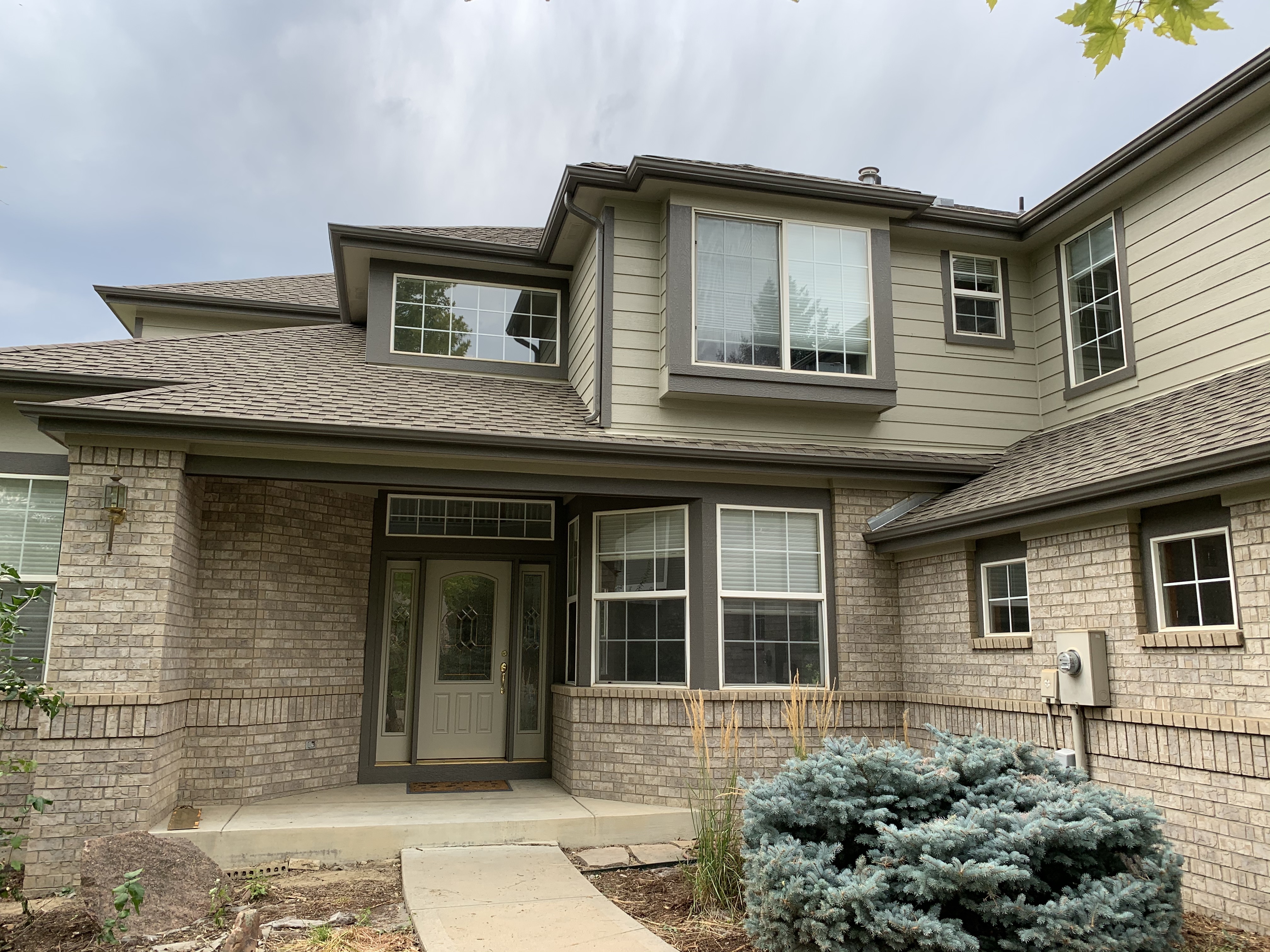

Just wash, dry, scrape any raised or cracked stain, and re-stain with a brush. Pros: Stains don't require extensive surface prep the way paint does. These come in many colors, but choose carefully-if you want to change colors next time around, you'll need to sand the surface completely. But they still allow the texture to show through. Opaque stains behave more like paint they offer maximum protection and hide much of the wood's look. Color choices are not nearly as numerous as those for latex paint, but there's still a broad range of options. Semi-transparent stains are bulkier and offer more protection than clear stains, because they contain a hint of pigment.

Over time, the wood under clear stain will continue to discolor, forcing you to eventually move to the next category. Clear stains can still vary greatly in appearance, so you will want to experiment on a scrap piece of shingle to choose your favorite product. You'll see more of the wood, but you'll need to reapply as often as every two to three years. You don't want to cover an oil with a latex stain, or vice versa, unless the old coat of stain has aged and weathered to the point where the new coat can adhere.Ĭlear stains are extremely translucent. Like paints, stains come in latex and oil-based versions. As a rule, stain isn't as protective as paint sunlight and weather can still penetrate the stain, causing the wood to age and discolor. Cedar, redwood, and other beautiful varieties cry out for stain. Stain is the choice when you want to let some of the natural features of the wood shine through but still shield your investment from the elements. Low-VOC oil paint is available, but even these products contain more VOCs than low-VOC latex paint.Ĭosts: $35 to $45 a gallon for premium oil-based paint $45 to $55 a gallon for premium low-VOC paints. The average can of oil paint has more VOCs than a can of conventional latex paint. Toxic solvents are required to clean brushes and other equipment that come in contact with oil paint.

(Some people actually like the effect.) Oil paint can never be applied on top of old latex paint the two won't bond properly. That makes them perfect for high-traffic uses: porch floors, steps, metal handrails, even your front door.Ĭons: Over time, oil paint can become brittle and crack, producing an "alligator" look. Pros: Oil paints dry hard and get harder with time. But these days it plays second fiddle to latex. Oil paint, long prized for its durability, used to be the gold standard for exteriors and some high-traffic house trim such as handrails, doors, and floors. It's often smarter to stick with oil if you've got oil, and latex if you've got latex.Ĭosts: $35 to $45 a gallon for premium latex paint $45 to $55 a gallon for premium low- or zero-VOC paints. That means stripping nearly all the old paint off the wood first, a time-consuming and expensive job.

In general, latex paint doesn't bond well to previous coats of oil paint unless you prepare the surface very well. These odors, produced by volatile organic compounds, are toxic in high quantities and contribute to air pollution. In addition to wood, latex can also cover siding made of vinyl, aluminum, fiber cement, stucco, brick, and metal.Ĭons: Unless you're using "green" products, expect to smell paint fumes from the moment you open the can until the paint dries completely. The paint film remains flexible even after drying, so it breathes and moves slightly to accommodate changes in temperature, or even house settling, without cracking. Pros: Latex paints are easy to work with and clean up with water. Semi-gloss or gloss offers the most protection and works well on high-use areas like window and door trim. Satin, with its slightly higher sheen, is a good choice for wood siding. Flat paint, commonly used indoors, offers the least protection against the elements. These water-based paints come in an endless range of colors and three popular finishes. Acrylic latex is the favored choice, both of pros and do-it-yourselfers.


 0 kommentar(er)
0 kommentar(er)
